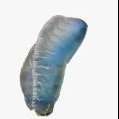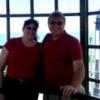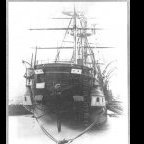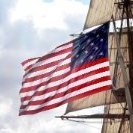-
Posts
1,305 -
Joined
-
Last visited
Reputation Activity
-
 Papa got a reaction from KevinR in Gjoa by Papa - FINISHED - Model Shipways - 5/32” = 1’ - old solid hull kit
Papa got a reaction from KevinR in Gjoa by Papa - FINISHED - Model Shipways - 5/32” = 1’ - old solid hull kit
Boom and gaff are in. Now I am tying ratlines, my least favorite part of rigging.
-
 Papa got a reaction from Harvey Golden in Gjoa by Papa - FINISHED - Model Shipways - 5/32” = 1’ - old solid hull kit
Papa got a reaction from Harvey Golden in Gjoa by Papa - FINISHED - Model Shipways - 5/32” = 1’ - old solid hull kit
Have the main shrouds in now.
-
 Papa reacted to xodar461 in Foss Landing and The shipyard at Foss Landing by xodar461 - Sierra West Scale Models - 1/87
Papa reacted to xodar461 in Foss Landing and The shipyard at Foss Landing by xodar461 - Sierra West Scale Models - 1/87
Greetings!
It has been a while since my last post but work proceeds on Foss Landing. I have completed the Addison and here are a few photos. Construction is quite similar to the Jewel so there is no need to repeat. As with the Jewel, I chose to rig with scale blocks and rope, using turnbuckles for the standing rigging. The arrows on the photo below were for a brief tutorial on rigging that can be found on the Sierra West forum.
I will probably add some more details like netting, spare rope and barrels at a later time.
This completes the structures of Foss Landing. Here are some photos of them all laid out like in the diorama.
And here is a photo of some HO scale add-ons that can be seen in the photos above.
Next up: finishing the barrels, oil drums and trash cans, then onto the Shipyard.
Jeff
-
 Papa got a reaction from Harvey Golden in Gjoa by Papa - FINISHED - Model Shipways - 5/32” = 1’ - old solid hull kit
Papa got a reaction from Harvey Golden in Gjoa by Papa - FINISHED - Model Shipways - 5/32” = 1’ - old solid hull kit
Boom and gaff are in. Now I am tying ratlines, my least favorite part of rigging.
-
 Papa reacted to mgdawson in Help with translation of rigging term
Papa reacted to mgdawson in Help with translation of rigging term
Hmm ChatGPT says pretty much the same thing, maybe it's the bosuns belaying pin for giving slackers the hurry up 😂
-
 Papa got a reaction from mtaylor in Help with translation of rigging term
Papa got a reaction from mtaylor in Help with translation of rigging term
The belaying key labels on my Gjoa sail plan are all in English except for one pin labeled ørefiken. I assume this is Norwegian as Gjoa was a Norwegian ship. Can someone translate this for me? Google translate isn’t helpful. It says it means cuff or slap on the face.
thanks
-
 Papa got a reaction from Keith Black in Help with translation of rigging term
Papa got a reaction from Keith Black in Help with translation of rigging term
The belaying key labels on my Gjoa sail plan are all in English except for one pin labeled ørefiken. I assume this is Norwegian as Gjoa was a Norwegian ship. Can someone translate this for me? Google translate isn’t helpful. It says it means cuff or slap on the face.
thanks
-
 Papa got a reaction from Coyote_6 in Gjoa by Papa - FINISHED - Model Shipways - 5/32” = 1’ - old solid hull kit
Papa got a reaction from Coyote_6 in Gjoa by Papa - FINISHED - Model Shipways - 5/32” = 1’ - old solid hull kit
Have the main shrouds in now.
-
 Papa got a reaction from Srodbro in Gjoa by Papa - FINISHED - Model Shipways - 5/32” = 1’ - old solid hull kit
Papa got a reaction from Srodbro in Gjoa by Papa - FINISHED - Model Shipways - 5/32” = 1’ - old solid hull kit
Have the main shrouds in now.
-
 Papa reacted to Doug McKenzie in Santa Maria, Pinta and Nina by Doug McKenzie - FINISHED - Heller - 1:75
Papa reacted to Doug McKenzie in Santa Maria, Pinta and Nina by Doug McKenzie - FINISHED - Heller - 1:75
In this post, we'll show how we will neutralize the different scales of the nao (Santa Maria) 1 to 78 and the caravels (Nina and Pinta) 1 to 100. In Pic 1 the trio is shown lined up with each other. The Santa Maria dwafs the two caravels inappropriately because the scales are different.
In Pic 2, the Santa Maria has been pushed back about 14" so that she is on a parallel course to the caravels but displaced from their course line. Letting the caravels remain at a scale of 1 to 100, the scale of Santa Maria appears to have been increased from 1 to 78 up to 1 to 95. In the actual placement, where the hulls will be displayed, the apparent scale will probable be a little less.
Well, I have disappointing news. I started to make the changes to the stern upper profiles of Nina and Santa Maria and it became apparent that it would ruin some of the clean sweeps of the wales and planks so I have decided to leave them as is. I still take pleasure in the technique of equalizing the scales of the nao and the caravels, though.
-
 Papa reacted to Doug McKenzie in Santa Maria, Pinta and Nina by Doug McKenzie - FINISHED - Heller - 1:75
Papa reacted to Doug McKenzie in Santa Maria, Pinta and Nina by Doug McKenzie - FINISHED - Heller - 1:75
Having fessed up to a serious mistake, I will now attempt to rectify the situation by comparing Nina and Pinta between Heller and Hidalgo PROPERLY. Pic 1 shows both ships as Heller models them to be the same. Notice that even the 'transoms' are the same. btw If I remember, I'll always show Nina in front of Pinta because she was more maneuverable and probably pretty much as fast. Similarly, Santa Maria will always bring up the rear. This part of the hull is reflected in the main dimensions that were compared in Post 2.
Pic 2 shows them different in their fore and aft 'vertical ascensions' - Nina has no rise in the bow and a short rise in the stern while Pinta has a short rise in the bow and a long rise in the stern. [The mistake that I made earlier was assuming they both had the short rise in the bow and the short rise in the stern. Let's not discuss how such a mistake was made.]
Pic 3 shows the comparison of Heller's Nina (red) to Hildago's (black). Overall, it is a close match except for the stern's upper profile for which Heller is both higher and steeper.
Pic 4 shows the comparison of Heller's Pinta (red) to Hildago's (black). Overall, it is a good match except for the bow's upper profile for which Heller is higher but at the same slope. Also, Heller's stem is much fuller that Hidalgo's. It must be that Pinta's stem was fuller than Nina's and that the two lower, identical Heller stems happened to match Nina's stem. If we add some comments on Santa Maria we can then discuss remidiation. In Pic 1 of post 4 the profiles of Santa Maria were compared. It is noted here that the stern upper profile of Heller's was lower and less steep than Hidalgo's.
Focusing on the stern upper profile we quantify one of the differences in Pic 5 using the slant of the stern upper profile measured in degrees. We focus on the slant because it is very discernable to the eye.
The first thing to note is that the varistion in the Hidalgo's slants (7 to 10) is much smaller than for Helller (3 to 13). Combining this with Hidalgo's statement that "much less is known about Pinta than the other ships," we could duduce that the slants for all three ships was near 8. Our target will be to decrease Heller's Nina from 13 to 8 degrees, leave his Pinta's at 10 and increase his Santa Maria's from 3 to 8.
The next thing to quantify is the verticle position of the stern upper profile. Note that these dispacements not only line up the stern upper profiles better but they also fix the slants.
The key points of interest are the aft most point on the stern upper profile and the forward most point of that profile. Heller's aft most point for Nina needs to drop 7 mm while the forward most point stays where it is. The aft most point for Pinta should be dropped 3 mm as well as the forward most point but we will leave Pinta alone since the difference is small and the slant does not need to be corrected either. The aft most point for Santa Maria needs to be raised 11 mm and the forward most point raised 7 mm.
We will not be trying to fix Pinta's forward upper profile because the slant is quite close and the displacement is modest. Nor will we try to fix Pinta's stem because it would be very difficult. In the next post, we'll show how we will neutralize the different scales of the nao (Santa Maria) 1 to 78 and the caravels (Nina and Pinta) 1 to 100. Then we will return to the modifications of the stern upper profiles.
-
 Papa reacted to Doug McKenzie in Santa Maria, Pinta and Nina by Doug McKenzie - FINISHED - Heller - 1:75
Papa reacted to Doug McKenzie in Santa Maria, Pinta and Nina by Doug McKenzie - FINISHED - Heller - 1:75
Pic 1 shows the 3 hulls with all their fittings on viewed midship forward. Pic 2 is the same but viewed midship aft.
Next, we'll show all 3 ships with their masts stepped discussing the modifications that have been made to implement Hidalgo's mast dimensions and locations as best we can. This is also a good time to compare 19th century American and British masting practices with late 15th century Spanish and Portugese practices.
Santa Maria
First, we compare the mainmasts. 1) Heller's Santa Maria mainmast has pretty much the same length as Hidalgo's. 2) The diameter at the partners, however, is only 85% as big. I'm guessing that the full diameter looks too fat to the modern eye so Heller reduces it somewhat. In the 19th century, a mast the same length would have been even skinnier, about 75% as big in diameter as Hidalgo's. 3) Interestingly, the taper of Heller's mast (diameter at the hounds / diameter at the partners), 57%, is about the same as Hidalgo's, 62% whereas in the 19th century, there was less taper at 75%.
Second, we discuss the mast rakes. Heller follows Hidalgo closely with mainmasts being vertical, foremasts having a slight rake forward and mizzen masts having rake aft. By the 19th century, all masts raked aft with the least rake forward and the most rake aft.
Third, the foremasts and mizzen masts. This discussion needs to include the sails since they are affected by changes in the masts. As with the mainmast, Heller's mainsail is in good proportion to Hidalgo's. However, both the foremast and the mizzen mast had to be shortened to about 70% of Heller's height to match Hidalgo's and this directly effects the sail's heights also. The sail area of the foresail is reduced to 70% but the area of the mizzen is reduced to about 50% of Heller's original because it is a lateen sail and the foot is reduced by 70% as the height is reduced. The mizzen mast also had to move forward so that the sheet of the mizzen sail can be taken to the taffrail since Hidalgo does not support Heller's boomkin. Hidalgo points out that the mainsail of a nao is by far the main contributor to the speed of the ship; the other sails are mainly for balance to aid in steering.
Pinta
The main and mizzen masts as well as the bowsprit were fine but Heller's foremast needed to be shortened to about 90% of the original. Hidalgo does not give info on mast diameters for Pinta or Nina so we cannot make any comparisons.
Nina
Both main and mizzen masts of Heller's were in good proportion to Hidalgo's.
The next post wil show the shrouds of the three ships.
-
 Papa reacted to Doug McKenzie in Santa Maria, Pinta and Nina by Doug McKenzie - FINISHED - Heller - 1:75
Papa reacted to Doug McKenzie in Santa Maria, Pinta and Nina by Doug McKenzie - FINISHED - Heller - 1:75
Now we proceed to complete the raised fo'c'sle. Pic 1 shows 3 of the slanted planks that connect the raised fo'c'sle to the top of the caravel bow. Hidalgo clearly shows this slant but it wasn't clear to me why it appears. The combination of the platform overhanging the stem and starting the planking at the bow induces the slant.. Pic 2 shows the completed planking.
happens
Pic 3 shows the panel borders which sort of mimic the open rail at the stern. The large arch is seen in this Pic also. There are no hints as to the purpose of this planked surface with an arch in it. Pic 4 shows the completed platform after being coated with whale oil and fish oil. At this point, I can say that how the decks were treated is not described. Heller uses a tan to represent that unknown treatment.
Pic 5 shows the whole ship with the completed bow platform.
-
 Papa reacted to DB789 in Ranger 1864 by DB789 - FINISHED - Vanguard Models - 1:64 - Barking Fish Carrier
Papa reacted to DB789 in Ranger 1864 by DB789 - FINISHED - Vanguard Models - 1:64 - Barking Fish Carrier
First planking complete. This continued to be easy and straightforward. I could plank her with no edge bending or soaking of planks. Probably would have resulted in a tidier finish if I had edge bent a few of the tougher planks and will do so for the second planking.
Then nails removed and sanded. No filler yet.
Then the rabbets and inner stern board fitted and clamped to dry.
I found that I needed to unglue and sand the tops of the outer stern frames so these were the same shape as the stern board.
-
 Papa reacted to madtatt in Mikasa by madtatt - Merit International - 1:200 - PLASTIC - pre-Dreadnought battleship of the Imperial Japanese Navy (IJN) - appearance after 1905
Papa reacted to madtatt in Mikasa by madtatt - Merit International - 1:200 - PLASTIC - pre-Dreadnought battleship of the Imperial Japanese Navy (IJN) - appearance after 1905
Thank you very much for the advance praise, Yves.
Continue working on the hull, which will probably take quite some time.
Because after I filled the recesses with styrene profiles, I noticed significant sinkholes that unfortunately had to be thickly filled.
On the right side, I think you can still clearly see the small dent of the sink under the filler.
Since I had to do a lot of filing and sanding here, I could no longer take the surface structure of the hull into account and removed it. Which isn’t a big deal since I’ll be making them again with styrene.
After the first sanding process, the worked areas were primed as a check and I am quite happy with the result.
To the next round…
-
 Papa reacted to madtatt in Mikasa by madtatt - Merit International - 1:200 - PLASTIC - pre-Dreadnought battleship of the Imperial Japanese Navy (IJN) - appearance after 1905
Papa reacted to madtatt in Mikasa by madtatt - Merit International - 1:200 - PLASTIC - pre-Dreadnought battleship of the Imperial Japanese Navy (IJN) - appearance after 1905
Lets start.
First the basics, with glue the fuselage together.
Next, drilled holes for the stand nuts.
Neatly glued in with two components resin. Just like the internal structures to stiffen the torso. This time I treated myself to the elegant stands from Pontos. Look really great. Then the first lower deck comes into the hull. Now it is really very stable. Next, the holes for the crampons. Nice straight through the drilling templates from Pontos. And the usual drilling out of the portholes. After researching the few images available, I noticed that the porthole that sits on the model below the anchor hawse did not exist. Herby63 discovered this too.
This was then closed with a round styrene profile. Filled and sanded. Another mistake that needs to be corrected. Merit made recesses in the fuselage to accommodate the etched piece gunports from the model in the correct location.
Since I’m using the pontos set here and the hinges of the gunport on the original ship were riveted onto the hull from the outside, I close them with styrene. I’ll be busy with that for a while. -
 Papa reacted to madtatt in Mikasa by madtatt - Merit International - 1:200 - PLASTIC - pre-Dreadnought battleship of the Imperial Japanese Navy (IJN) - appearance after 1905
Papa reacted to madtatt in Mikasa by madtatt - Merit International - 1:200 - PLASTIC - pre-Dreadnought battleship of the Imperial Japanese Navy (IJN) - appearance after 1905
Ahoi, Freunde der Klebezunft.
Zurück zu meinen Wurzeln, dem Bau von Modellschiffen.
Es war ein schöner Ausflug in das Star-Wars-Universum und ich hatte viel Spaß.
Aber jetzt freue ich mich auf ein echtes Schiff, das ich schon lange in der Pipeline habe.
Das Schlachtschiff Mikasa aus der Zeit vor dem Dreadnought der Kaiserlich Japanischen Marine (IJN).
Ich weiß, für die meisten nichts Neues. Es gibt so viele Bauberichte über dieses Boot und dennoch bleibt es für mich ein Muss. Und das aus zwei Gründen.
Da ist zunächst die Form des Rumpfes. Wirklich archaisch. Erinnert mich aufgrund des angedeuteten Widders an eine griechische Triere. Mir gefällt es unglaublich gut. Und an Deck ist auf diesem Schiff alles so anders als zum Beispiel auf meiner Bismarck.
Zweitens habe ich für dieses Modell nicht nur ein Pontos Detail Up Set. Nein, als Bonus gibt es auch das MK1 Deluxe Paket von KA Models. Bei Pontos fehlen einige Details. Wahrscheinlich nicht gründlich genug recherchiert, oder was?! Aber dazu später mehr.
Nun ja, schon in der ersten Kabine wird es eine ätzende Orgie geben. Was für ein Spaß.
Dann möchte ich Ihnen das verfügbare Material für dieses Projekt vorstellen.
Zunächst einmal das Modell.
Dies ist von einer Reihe von Herstellern wie I Love Kit, Wave Corporation oder HobbyBoss erhältlich. Aber alles ist definitiv Trumpeter, was man sofort sieht, wenn man die Box öffnet.
Schließlich kommt mein Mikasa von Merit International. Es ist erstaunlich, unter wie vielen Namen dieses Modell verkauft wird.
Auf dem Bild ist die Box der Firma I Love Kit zu sehen, da ich meine nicht mehr habe.
Natürlich gibt es auch mein liebstes Ätzteileset von Pontos.
Und jetzt übertreibe ich, ich weiß, aber dieses Modell wird auch mit dem MK1 Deluxe-Paket von Ka Models geliefert. Was mich dazu motiviert hat, erkläre ich später in meinem Baubericht.
Leider gibt es von Veteran Models zu diesem Modell nicht viel, aber immerhin das:
Diesmal stammen die Figuren von der Firma ION, die ich passenderweise als Preis für meine Bismarck gewonnen habe.
Für mich ist es immer noch unverständlich, dass die Hersteller, egal ob Modellbau oder teure Nachrüstprodukte, Ankerketten mit Doppelsteggliedern anbieten. Also machten sie sich Sorgen.
Kommen wir zu einem weiteren exquisiten Accessoire, das ich erst durch den erstklassigen Baubericht von Jeff59 entdeckt habe. Diese fantastischen Schlauchboote von Micro Master aus Neuseeland.
Ein kleiner Traum.
Das ist also die erste Zutatenliste für mein neues Projekt. Wobei ich nicht ausschließen kann oder will, dass das ein oder andere Teilchen dabei sein könnte.
Auf die nächsten zwei Jahre voller Spaß.
-
 Papa reacted to RGL in IJN Yamato by RGL - FINISHED - Tamiya - 1/350 - PLASTIC
Papa reacted to RGL in IJN Yamato by RGL - FINISHED - Tamiya - 1/350 - PLASTIC
AND BANG, finished.
Thanks for the likes and support, to the followers who suffered the 8 month build. 20K views on a plastic model is flattering to say the least.
The next build will not be so complex, there is so much detail it just gets lost. You can see from my previous builds, it is a magnitude more involved, but I have learnt to use an airbrush (thanks Banyan) and that Dutch people have a very similar sense of humor to Aussies (Cog).
Off to the digital graveyard.
-
 Papa reacted to Charter33 in Woodwork/Model making workshop by Charter33 - FINISHED - Scale 1:1
Papa reacted to Charter33 in Woodwork/Model making workshop by Charter33 - FINISHED - Scale 1:1
Thanks for the 'likes'!
Moving on to the walls......
Side walls comprise of four 4' wide x 6' high treated softwood frames faced with OSB board each. A modular design with each section to be covered in breathable membrane and composite cladding. Completed sections will then be bolted together and secured to the floor.........
Far gable end next. Framed and faced the same way but it will be covered in membrane and clad once all the elements are finally assembled - I can just about manage to lift this panel on my own..... no chance if it's clad! The bottom fence panel will be temporarily removed to do this.
First test assembly........
....... all good and now fully faced.
A meeting with the surveyor from the company who are making the French doors ironed out the finer details of the nearer gable end, and this will be the next stage.
Making progress!
Cheers,
Graham.
-
 Papa reacted to chadwijm6 in Avro Lancaster B.III (SPECIAL) 'THE DAMBUSTERS' by Chadwijm6 - FINISHED - Airfix - 1/72
Papa reacted to chadwijm6 in Avro Lancaster B.III (SPECIAL) 'THE DAMBUSTERS' by Chadwijm6 - FINISHED - Airfix - 1/72
Glossed and having a go at engine smoke markings... I'm sure there is a technical term!
-
 Papa reacted to chadwijm6 in Avro Lancaster B.III (SPECIAL) 'THE DAMBUSTERS' by Chadwijm6 - FINISHED - Airfix - 1/72
Papa reacted to chadwijm6 in Avro Lancaster B.III (SPECIAL) 'THE DAMBUSTERS' by Chadwijm6 - FINISHED - Airfix - 1/72
Good progress today. Sanded the camouflage down and resprayed it. I did this freehand with the view that it should help improve my airbrush technique. Undercarriage is on too. Starting to look like a plane!
-
 Papa got a reaction from Coyote_6 in Gjoa by Papa - FINISHED - Model Shipways - 5/32” = 1’ - old solid hull kit
Papa got a reaction from Coyote_6 in Gjoa by Papa - FINISHED - Model Shipways - 5/32” = 1’ - old solid hull kit
The main mast is in and some of the bowsprit rigging is in place
-
 Papa got a reaction from Harvey Golden in Gjoa by Papa - FINISHED - Model Shipways - 5/32” = 1’ - old solid hull kit
Papa got a reaction from Harvey Golden in Gjoa by Papa - FINISHED - Model Shipways - 5/32” = 1’ - old solid hull kit
The main mast is in and some of the bowsprit rigging is in place
-
 Papa reacted to CDW in 1966 Buick Riviera by CDW - FINISHED - AMT - 1:25 Scale
Papa reacted to CDW in 1966 Buick Riviera by CDW - FINISHED - AMT - 1:25 Scale
An extra light panel line wash of black does a lot to bring out hidden details.
-
 Papa reacted to CDW in 1966 Buick Riviera by CDW - FINISHED - AMT - 1:25 Scale
Papa reacted to CDW in 1966 Buick Riviera by CDW - FINISHED - AMT - 1:25 Scale
The basic kit engine, all painted out in basic factory colors. Next, will detail it out a bit. As is true with most model kit engines in this scale, no provisions are made for power steering pump or alternator brackets, so will need to scratch build those details in later steps.
This was the last year Buick produced the nailhead V-8 engine, this one being a 425 cubic inch displacement, high performance version known as the 465 Wildcat, the 465 making reference to the 465 foot pounds of torque the engine produced. It was guaranteed to smoke the tires and jump from stop light to stop light with vigor. Fuel economy literally sucked the high-octane gas right out of your gas tank at an appalling average rate of 10 miles per gallon. Those dual 4 barrel carburetors made for a thirsty engine.







